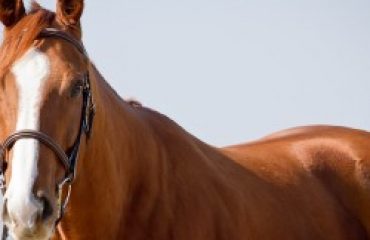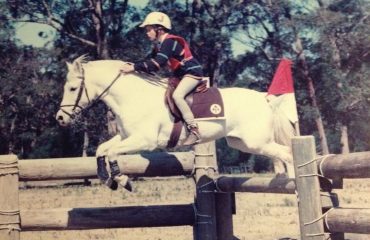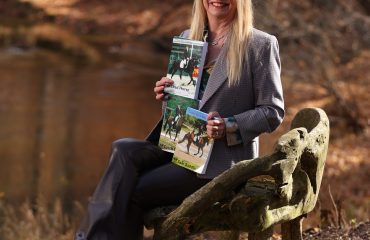
Brian Walker
Photo by Hervé Bonnaud, 1clicphoto.com
Brian Walker, a dual Canadian and American citizen, has trained, worked and ridden alongside the best in the world over the last 25 years. As a junior, Brian won the Maclay Medal Equitation Championship in 2001. Brian has made a name for himself by developing quality horses into successful competitors in both the hunter and jumper arenas, earning accolades for himself and his clients. Do you have a question you want Brian to answer? Send questions to editor@sidelinesnews.com.
My trainer has started to record my sessions so that she can point out the areas I need to work on. I noticed that I don’t have proper body alignment. It almost looks like I have “chair seat,” a commonly used phrased for incorrect positioning because my legs slide forward. Do you have any recommendations on how to keep my body properly aligned?
Whenever we have problems, we must first correctly identify the problem in order to correct it. Sometimes that’s more difficult than fixing the problem itself. If a rider’s body is always behind the motion, then the rider’s legs will slide forward. One is a direct result of the other. In this case, it’s not the seat or body position that needs work, it’s the rider’s leg position that needs to be fixed. When your legs slide forward, the upper body will automatically slide back, or be behind the motion. The rider must work on strengthening their lower leg by riding more often (practice is always the cure). The rider can practice riding a few times per week without stirrups. Also, you should change the length of your stirrups to help get your leg into the correct position, which serves as a constant reminder of where your leg should be. This will allow the upper body to be in the right position. The rider should imagine their body as a straight line from the shoulder to the hips to the heels.
With the heat in the summer, our horses get hot fairly quickly and take a lot to cool down. What do you suggest are the best ways to cool your horse down after working him? How do I know my horse is cool enough to go back to the barn?
The hot summer heat can affect each horse differently, just like people. For the most part, the horses we ride are originally from Europe and weren’t bred to be in the extremely hot weather. However, I’ve found that almost all horses get acclimated to the summer months. If you find your horse is fatigued when working in the heat, there are a few techniques that I find helpful. The most obvious is to make your horses fit so they have higher endurance, make sure they’re properly clipped, give your horses more breaks while you work when it’s hot out, and when it’s exceptionally hot, don’t ride your horses as long. After the horses’ workouts, you should always give them a long walk before bringing them into the barn. That doesn’t mean they have to stop sweating, that means their breathing has come down to a more normal level. If they’re having trouble cooling down while you’re on them, you should get off and give them a cool shower and hand walk them in the shade. In extreme circumstances, running cold water down the inside of the horse’s back legs will help cool them down quickly. There is a large vein that helps cool the horse down with contact of the cold water.
I compete in the jumpers and know that the tighter you turn your horse, the better. However, when I try to turn my horse in the air, I end up pulling a rail. How can I stop this from happening?
Going fast in jump-off is a skill that requires a lot of practice in order to do it well. Going fast isn’t just about foot speed but in the end, the fastest time is the least amount of strides done around the course. Making short, smooth turns is a great way to be quick while still keeping control of the horse. The mistake here is that you don’t want to turn your horse in the air; you want to turn them on landing. Watching good riders do this, it may seem like they’re turning in the air but they’re actually doing this on landing. Front hooves are basically on the ground, the hind end has just come over the jump and at that point, you should be turning your horse. This is a move that requires the most perfect timing. Done too early, you most likely will knock the jump down front or behind and done too late, you risk losing time. If you keep knocking the jump down behind, you’re probably trying to turn too early, so you should give your horse another moment before you start your turn.
I’ve noticed that when I jump, my upper body has a tendency to topple forward or fall back. The issue is that I’m raising my heels. What tips do you recommend to correct this and make sure my heels stay down?
A rider’s foundation is their weight in their heels and lower leg. Loose lower leg and heels that come up make it difficult to keep your position in the middle of your horse when you jump. In the end, this is a problem that’s mostly fixed with more practice, which will help your balance. As a rider, we must not try to grip with our knees because that will make it harder to let our weight be on our lower leg and stirrup. I also feel that sometimes when you’re only thinking about putting your heels down, it’ll make you tense and actually have the opposite effect. The rider should stay relaxed, allowing all their weight to fall into their lower leg, thinking they’re wrapping themselves around the horse. The rider should think about keeping their core tight, which will keep their lower leg tighter. Your core is the center for your energy. This approach creates a better mindset and therefore better reactions. More time in the saddle is the best cure, as a stronger foundation will lead to a more solid position on the horse.
I know that you accumulated many ribbons and accomplished a lot in the equitation. What are some tips that you have for the flat phase of the Maclay?
A solid foundation and proper turnout are some key ingredients in winning equitation classes. To win a Maclay class, you first need to be called back after jumping in first or second position, otherwise you won’t have a chance at winning — or at least your odds are very slim. Winning a simple flat class doesn’t require much skill; it only requires the proper training and the right look with an easy, well-schooled horse. Winning equitation classes that also have jumping phases, like the Maclay, require skill and good riding. Jumping phases are first, so being good in the flat doesn’t matter if you can’t find the jumps.













